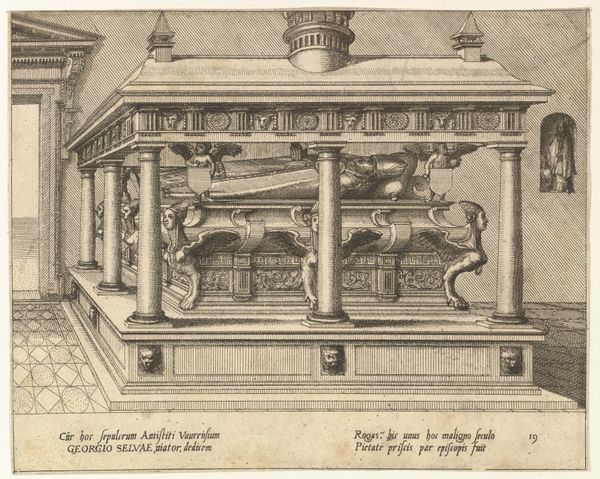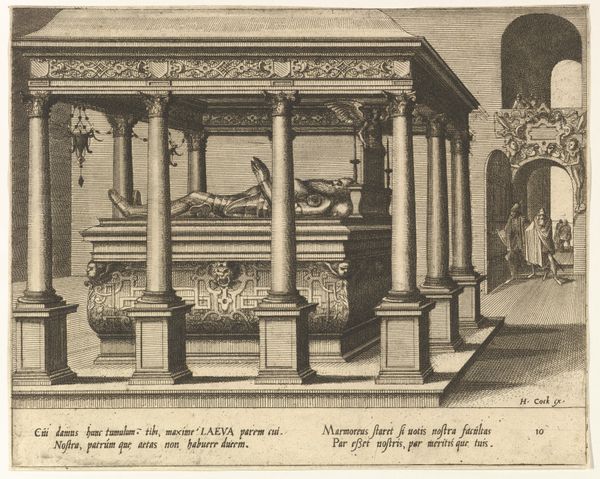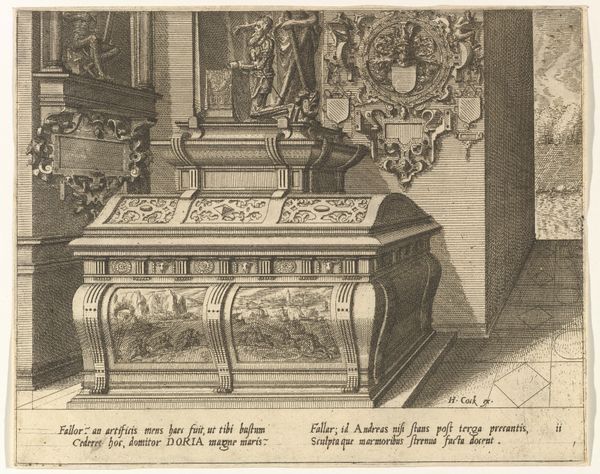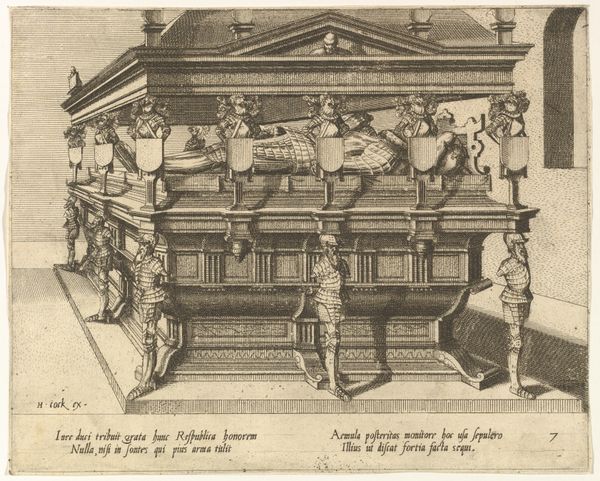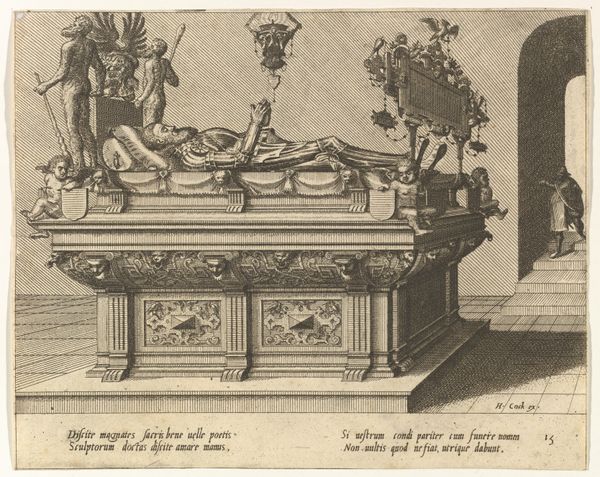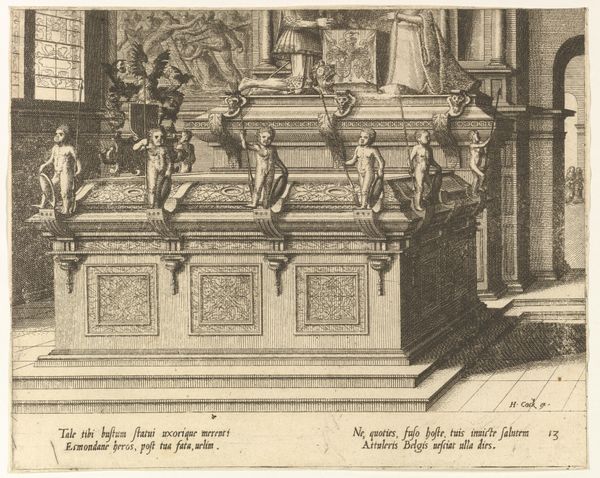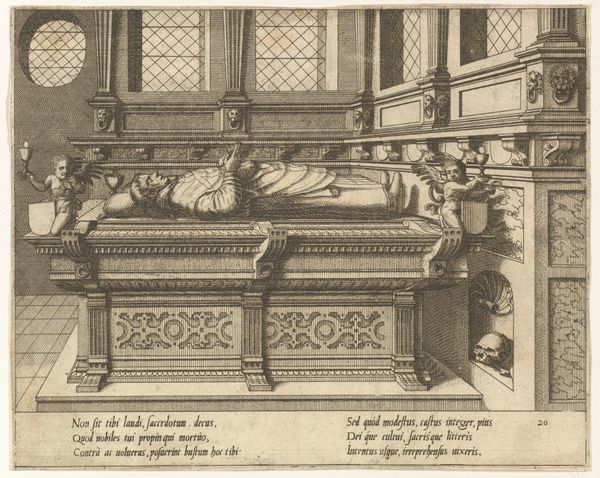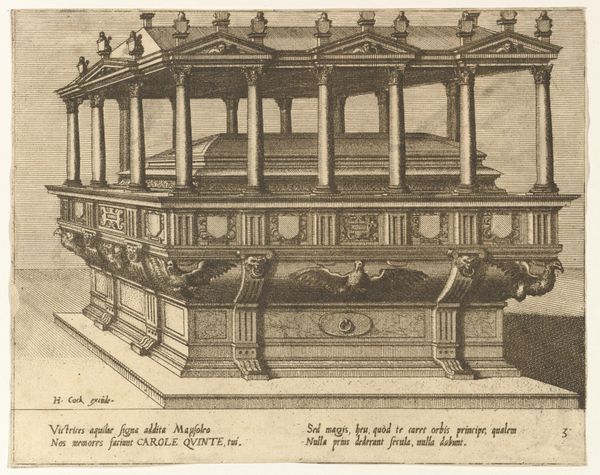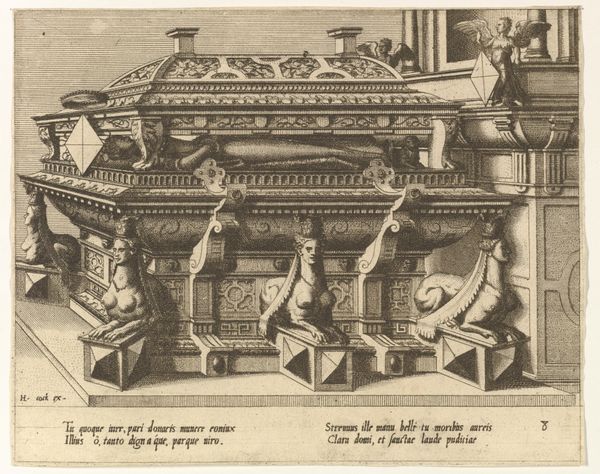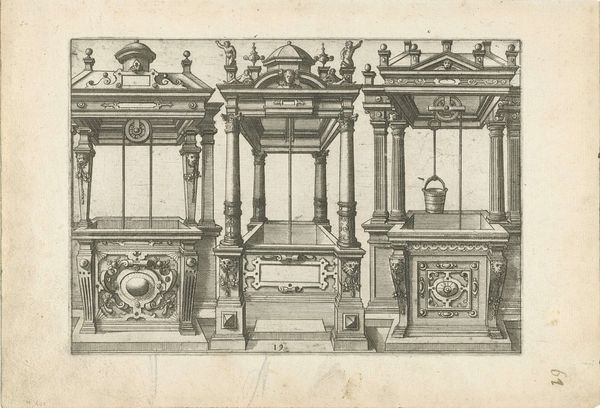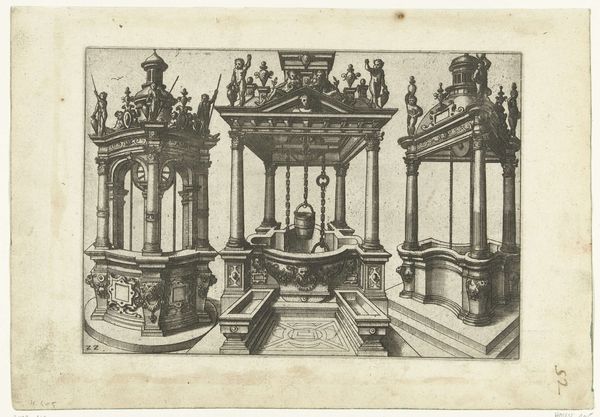
drawing, print, engraving, architecture
#
drawing
# print
#
landscape
#
11_renaissance
#
history-painting
#
northern-renaissance
#
engraving
#
architecture
Dimensions: sheet: 6 5/8 x 8 5/16 in. (16.9 x 21.1 cm)
Copyright: Public Domain
This print, Cœnotaphiorum (9), was made by Hans Vredeman de Vries in the 16th century. It's an engraving, meaning that the image was incised into a metal plate, likely copper, and then printed onto paper. Look closely and you'll notice that the image is composed of precise lines and intricate details. Vredeman de Vries would have used specialized tools called burins and gravers to meticulously carve the design. This was a labor-intensive process, demanding immense skill and patience. The architecture is rendered with particular care, suggesting an interest in perspectival accuracy. The printmaking process allowed for the wide distribution of images, helping to circulate the artist's ideas. In this instance, the print disseminates Vredeman de Vries's vision of cenotaph architecture, effectively translating his ideas into a reproducible format. What's interesting is that this process also democratized access to these visions, allowing more people than ever before to engage with them. This is how material processes can challenge traditional notions of artistic value.
Comments
No comments
Be the first to comment and join the conversation on the ultimate creative platform.
